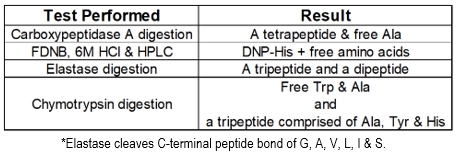Peptidases are specialized enzymes that catalyze the hydrolysis of specific peptide bonds, effectively breaking down proteins into smaller peptide fragments that cells can utilize. Among these enzymes, trypsin and chymotrypsin are significant peptidases found in the digestive system, aiding in the breakdown of dietary proteins.
Focusing on trypsin, it is known for its specificity, cleaving peptide bonds exclusively on the carboxyl side of the amino acid residues lysine (K) and arginine (R). This specificity is crucial, as trypsin does not cleave just any peptide bond but targets those adjacent to these particular amino acids. A key point to remember is that the presence of a proline residue in a peptide bond can inhibit cleavage, meaning that if proline is involved, the bond is likely to remain intact.
To visualize where trypsin acts, one can use a mnemonic: "dragons eat knights riding horses," where 'K' represents lysine and 'R' represents arginine. This imagery connects the structure of lysine, which resembles a knight's sword with its extended R group, to the action of trypsin, which cleaves like a sword. Lysine has four 'pointy ends' indicating a four-carbon chain, while arginine has three 'pointy ends' and a triangular nitrogen structure.
In practical terms, when analyzing a tetrapeptide, trypsin will cleave after lysine and arginine, but if a proline residue is involved in the peptide bond, that bond will be blocked from cleavage. For example, in a tetrapeptide containing alanine, lysine, arginine, and proline, trypsin will cleave the bond after lysine and arginine, resulting in two fragments: one containing alanine and lysine, and the other containing arginine and proline. The bond involving proline will remain unbroken due to its inhibitory effect.
Understanding the specificity and mechanisms of peptidases like trypsin is essential for grasping protein digestion and the biochemical processes that sustain cellular function.





